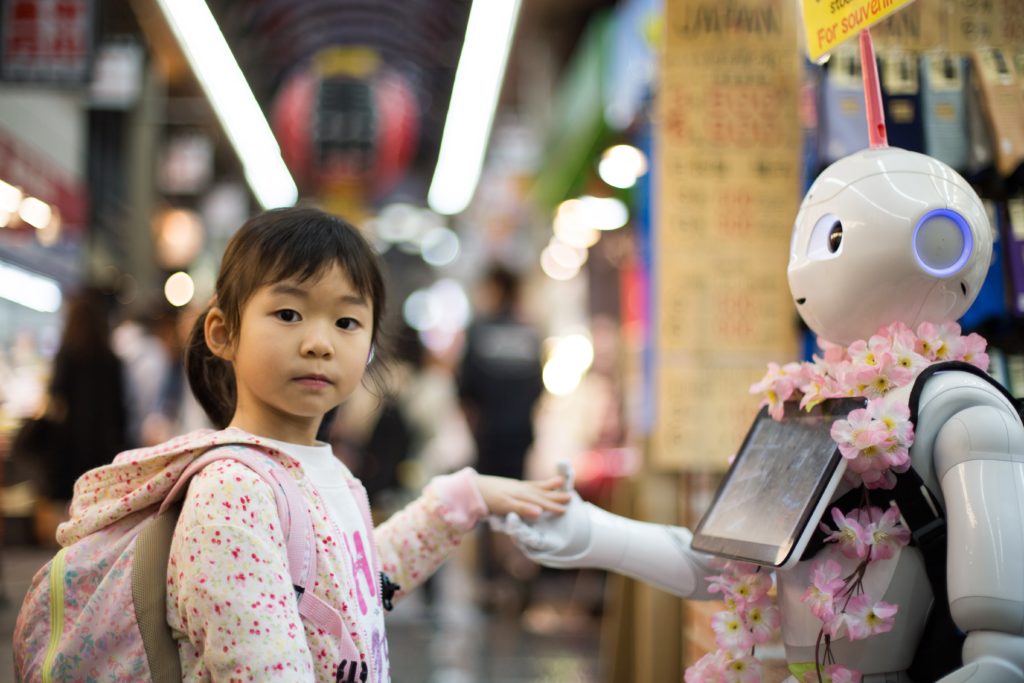
It’s a fascinating time for retail; as the race is on to enhance the customer experience. Tech is everywhere, and if you are coveting customers, you cannot get too far behind by not having some type of digitally enhanced shopping experience. That technology could be deployed inside the walls of your store or work in conjunction with your customers’ smartphones.
Robots once were a high-tech dream; now they are the norm. You may have noticed the use of robots in recent Super Bowl LIII commercials. Slate broke down six different brands that incorporated robots or AI in their ads. They included Michelob, SimpliSafe, Turbo Tax, and Amazon. And while brands take a tongue-in-cheek run at AI integration for those $5.25 million 30-second spots, people are very much into an enhanced shopping experience filled with AI. After all, we may not quite realize it, but AI is already guiding our lives.
We no longer wait for our alarm clock, set on radio, for the DJ to tell us what the weather and traffic will be. Alexa’s alarm wakes us, and our first question is, “Alexa, what will the weather be like today?” When we get into the car, and without asking, our iPhone tells us how long of a commute it is to the office. We have maps integrated with real-time traffic data to provide the smoothest commute into work. As we’ve come to embrace these elements in our daily rise and shine, why should our shopping experience be any different?
Recently, PC Magazine took a look at how AI and robots were impacting retail. One staggering statistic from the article: The $2 billion spent on AI in 2018 is expected to balloon to $7.3 billion in the next 4 years according to Juniper Research.
Among the amazing implementations hitting stores is Caper’s Smart Cart. This self-checkout cart has computer vision and sensor fusion as well as three cameras to automatically total up all of the items placed inside.
For shoppers who aren’t sure what they want and who need guidance, there is Heasy the Robot. A product of Hease Robotics, Heasy is on the go, and company executives believe that this mobile kiosk will deliver 20 times more interactions than a stationary kiosk. Heasy can direct shoppers all around a store, and it will scan loyalty cards to determine which deals it should offer specific consumers.
For that immediate purchase power, Aliso Viejo, California-based AWM has introduced its new Smart Shelf, frictionless shopping application. AWM Smart Shelf Frictionless Shopping is in-store retail technology that utilizes cameras and computer vision to automate the retail experience – including checkout and payment. The cameras located around the store interpret and understand whom the customer is, what product they pick up from the shelf, and ultimately what they want to buy, then charging their digital wallet as they leave the store.
One chain that is implementing this type of technology is Kroger. The supermarket giant has digitized the shelves of about 100 of the chain’s 2,780 stores. These shelves show ads and offer digital coupons that shoppers can enter into their smartphones. Consumers aren’t the only ones to benefit; stores now have real-time inventory data.
Clients tell us that Worldlink’s partnership is so valuable to them due to the highest levels of flexibility and accountability.
In our experience, multi-location companies create an environment that is focused most on adding to the visitor’s experiences when they work with partners focused on the chain’s goals in improving the lives of team-members & visitors, and nothing else.
If you’d like to have a conversation, we encourage you to utilize the Calendly link in the upper right-hand corner of this page to connect with Worldlink VP of Sales, Brett Busconi.